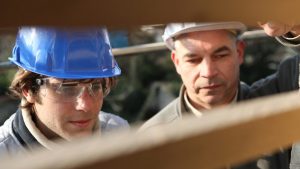The key to improving health and safety is to keep the conversation going, said Monte McNaughton, Ontario’s minister of labour, training and skills development at a recent safety event.
“The greatest lesson I ever got was from my mother who told me on my wedding day there will be some good days and there will be some challenging days, learn to laugh, learn to say sorry and whatever may come, always keep talking,” said McNaughton at A Safer Ontario for the People event, hosted by Tickner and Associates, a health and safety compliance specialist, in Richmond Hill, Ont. Nov. 15.
“That’s why when I was named the minister of labour back in June I got on the phone and opened a conversation. I reached out to more than 150 labour leaders, hundreds of employers and countless workers. I told everybody the exact same thing ‘I want you to know that my door is always open. We may not agree on everything but I will hear you out.’ ”
Although headway has been made in terms of awareness and training, there is always more that can be done.
“It’s not always about large associations or organizations and it’s not always about the rules and regulations that the government can bring in,” McNaughton explained. “Sometimes it’s about the conversations that people like you and I can have with each other. It could be as simple as speaking to your son or daughter about health and safety before they start that summer job, teaching them to speak up when something is not right. For employers they can have safety talks with their employees and truly listen to their concerns. Open and honest conversations about health and safety really are critical for all of us and it’s something that belongs in our homes, offices, schools and on our jobsites.”
The ministry is working on a number of initiatives to keep workers safe including the formation of a construction advisory panel and working with the Canadian Registered Safety Professionals on a new voluntary program that will reward safe employers in Ontario. They also conduct inspection blitzes every year to raise awareness.
“The sector has spoken loudly and clearly telling me that we must continue to prioritize health and safety,” said McNaughton. “We see far too many workplace injuries in the construction sector. When workplace injuries happen, people’s lives are devastated — families, coworkers and whole communities feel the impact. We take this very seriously.”
Ontario’s Chief Prevention Officer (CPO) Ron Kelusky told conference delegates the construction industry is taking responsibility for health and safety very seriously, adding the industry’s investment in health and safety is one of the highest per capita. More and more firms are getting their Certificate of Recognition and many buyers of construction are considering factors other than the lowest bid.
“The other thing that has happened is you’ve started to look at is what I would say is beyond compliance, beyond simply ticking the box and saying, ‘I took a course and I am safe,’ ” said Kelusky. “Taking a course, what we found, it doesn’t make you safe. It’s how you integrate the knowledge that you’ve learned into a system that you’re committed to. It makes good sense from a productivity point of view but also from a safety point of view.”
The CPO’s office also wants to focus on equipping employers and workplaces with the information and resources they need to stay safe, he said.
“When we did our falls analysis, we found out that probably the best time for you to do a tool box talk is around 1:30 on a Friday afternoon because we have identified issues of ‘I want to get out of here for the weekend’ or there are issues of distractibility and tiredness,” said Kelusky.
“We have a stack of information. We know where the problem is, what the problem is and what to do about it. The biggest challenge is we can’t transfer it and in a lot of cases we can’t translate it in the right way so people understand it. When it comes to health and safety, we talk to the converted, but we need to get out there and talk to the people that aren’t getting it.”
Monica Szabo, chair of the Board of Canadian Registered Safety Professionals, was also a speaker at the event.
“Our vision is for safe and healthy workplaces through certification,” Szabo said. “We believe that certified professionals deliver a high standard of service and ensure investment is working. The employers who actually invest in having a health and safety resource within their organizations, it’s critical in making sure that the health and safety program is critically looked at and is in the best state that it can be. Our purpose is to make sure that we provide excellence and professionalism to promote a high national standard and a mechanism for practitioners to actually validate their skills and identify practitioners as meeting a specific standard.”
Proceeds from the event will be donated to Threads of Life, which provides support after an on-the-job fatality, life-altering injury or occupational disease.
Follow Angela Gismondi on Twitter @DCN_Angela.










Recent Comments
comments for this post are closed